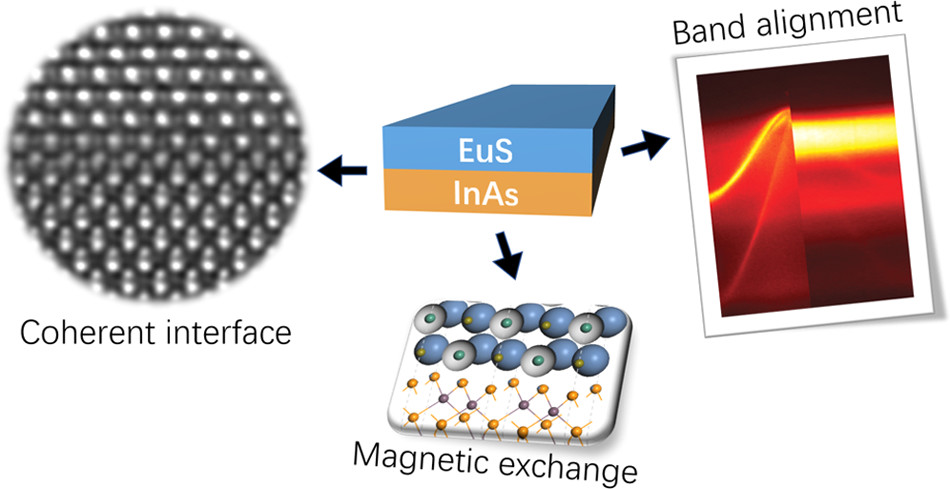Heterostructures of Superconductors and III-IV Semiconductors
Heterostructures of Superconductors, III-V Semiconductors, and Magnetic Insulators
Semiconductor-superconductor heterostructures are a promising platform to build topological quantum bits that could be more stable and scalable than competing technologies. Although interfaces between semiconductors and metals have been studied for decades, modern spectroscopy has only now matured to the point that it can directly measure the electronic structure at buried interfaces with sufficient resolution to help us understand and design next-generation quantum devices.
In this project, we investigate heterostructures of III-V semiconductors with large spin-orbit coupling (e.g. InAs, InSb), certain superconductors (e.g. Al, Pb). We recently developed a new approach to extract the band offset at the hybrid interface with order of magnitude improved accuracy compared to previous methods using soft X-ray angle-resolved photoelectron spectroscopy (SX-ARPES). In combination with in-situ thin-film growth, we can directly probe the buried two-dimensional electron gas (2DEG) quantum well states with sufficient resolution to extract interface electronic structure parameters that are often inaccessible to other probes, such as subband dispersions, subband occupation number, and subband carrier densities. By tuning the photon energy, we further obtain information about the electronic density perpendicular to the sample surface, which allows us to reconstruct the potential profile at the interface.
Lifting the spin-degeneracy in semiconductor 2DEGs by proximity with a ferromagnetic insulators (FMIs, e.g. EuS) is another important research direction that aims to reduce the need for large external magnetic fields in topological qubit devices. To elucidate the distribution of magnetic moments at the semiconductor/FMI interface, we use resonant X-ray reflectivity. We find that the Eu magnetic moments at the InAs/EuS interface are reduced compared to the bulk EuS values, possibly due to intermixing or strain at the interface.
Recent Publications
Electronic structure of InAs and InSb surfaces: density functional theory and angle-resolved photoemission spectroscopy
Shuyang Yang Niels B. M. Schröter, V. N. Strocov, S. Schuwalow, M. Rajpalk, K. Ohtani, P. Krogstrup, G. W. Winkler, J. Gukelberger, D. Gresch, G. Aeppli, R. M. Lutchyn, N. Marom
Advanced Quantum Technologies 20. January 2022
DOI: external page 10.1002/qute.202100033
